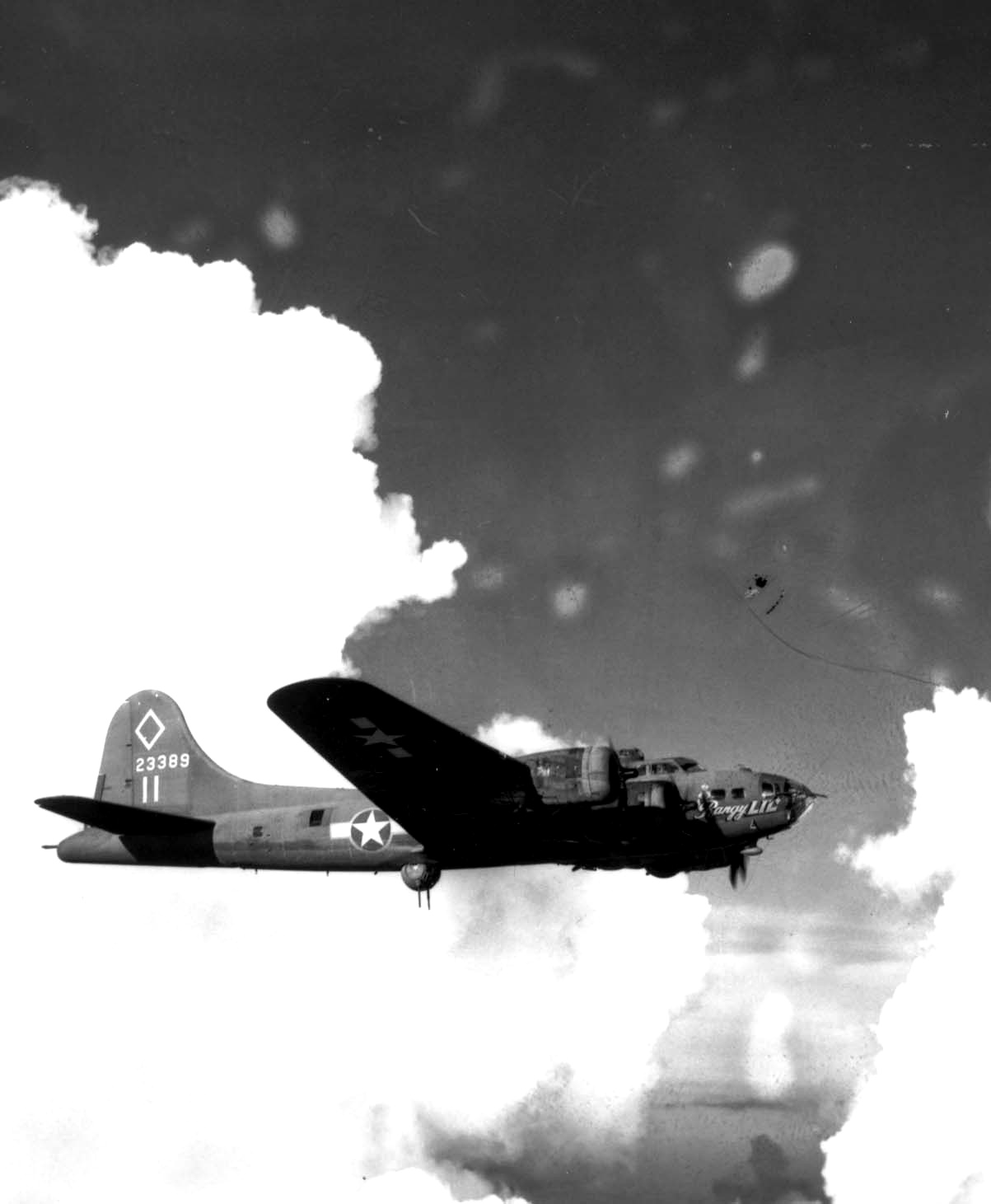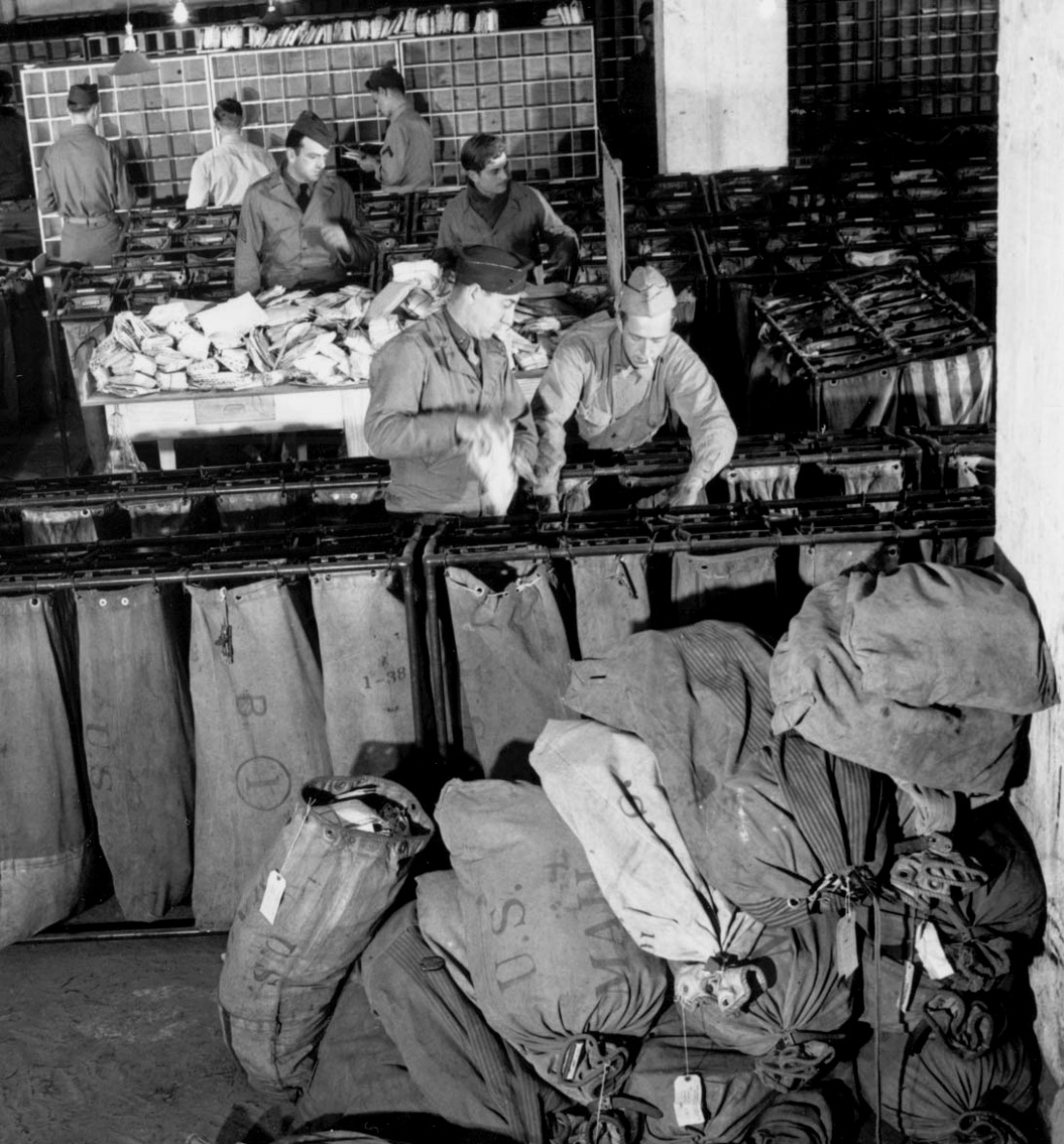(Above and Below) German Fighter Planes. The primary mission of these planes was to intercept and destroy bombers but they were also used for strafing and fighter bombing. The enemy used these types until the end of the war. (Top, German Focke-Wulf 190; bottom, German Messerschmitt 109)
Camouflaging Medium Bomber at Youks-les-Bains airfield. Camouflaging for hiding purposes in olive groves or on rough terrain was relatively successful; however, camouflaging an aircraft on a flat, featureless landing field for hiding purposes was not practical. Camouflaging was often practiced to the extent of deceiving the enemy about the type or serviceability of planes. Note that the bomber above is minus both of its engines. (Martin B–26 Marauder.)
Removing Film From Figther Plane after a reconnaissance flight. This long-range plane was adapted for photographic work by removing the armament and installing camera equipment instead. (P–38 Lightning)
Light Bomber Douglas A-20. This was a fast, versatile, and heavily armed plane used for both bombing and strafing in Tunisia. The American version was usually called the Havoc and the British version, the Boston
Heavy Bomber, Flying Fortress. This and the B–24 were the two heavy US four-engined bombers used in the Mediterranean area. (Boeing B–17)
APO (American Post Office) Oran. Mail from home was probably the most important of all morale factors and usually had first priority in spite of the fact that it occupied valuable shipping space needed for materials of war. Cargo space was saved with the V-Mail system by which letters were written on a special form, photographed on 16-MM film at certain centers in the country of origin, then printed overseas. To encourage its use, V-Mail was sent by the fastest means available. Letters from men in the services, other than those by regular air mail, were sent free of charge














